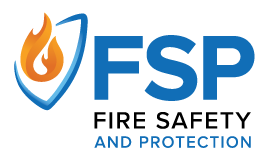4 MIN READ
How to Avoid Fines with Regular Fire Safety Inspections
Posted on September 16, 2024
Fire safety is not just about protecting property and lives—it’s also about staying compliant with local, state, and federal regulations. Failing to adhere to fire safety codes can result in hefty fines, legal liabilities, and potential shutdowns of your facility. Regular fire safety inspections are crucial for preventing these costly outcomes. Here’s how to avoid fines and ensure compliance through consistent inspections and proactive maintenance.
1. Understand Fire Safety Regulations
The first step in avoiding fines is understanding the fire safety regulations that apply to your building. These regulations are typically enforced by local fire departments or authorities having jurisdiction (AHJ). Key areas covered include:
- Installation and maintenance of fire alarms and sprinkler systems
- Proper placement of fire extinguishers
- Availability and visibility of emergency exits
- Functionality of emergency lighting and signage
- Proper fire door installation and compartmentation
Tip: Regularly check for updates to local fire safety codes, as they may change over time, requiring new installations or upgrades.
2. Schedule Regular Fire Safety Inspections
Routine fire safety inspections are your way of playing offense and saving yourself from penalties. Certified professionals should inspect your building’s fire protection systems to make certain everything is functioning properly. These inspections typically include:
- Testing fire alarms and smoke detectors
- Inspecting and maintaining sprinkler systems
- Verifying the proper placement and working condition of fire extinguishers
- Checking emergency exits for proper function and signage visibility
- Ensuring fire doors and compartments are compliant
How Often Should You Schedule Inspections?
- Fire alarms: Annually, as required by the National Fire Protection Association (NFPA)
- Sprinkler systems: Quarterly and annually, depending on local regulations
- Fire extinguishers: Monthly visual checks and annual professional inspections
By sticking to a routine inspection schedule, you can catch potential issues early before they result in violations or safety hazards.
3. Document Inspections and Maintenance
Keeping detailed records of your fire safety inspections is critical in demonstrating compliance to regulatory bodies. Documentation should include:
- Dates of inspections and any maintenance or repairs performed
- Certification of the inspectors
- Reports of issues found and the steps taken to resolve them
- Upcoming inspection dates
Proper documentation can protect you from fines by showing that you have taken all necessary steps to maintain compliance.
4. Invest in Regular Maintenance
Inspections are only one part of the equation. Regular maintenance of your fire safety systems guarantees that they function correctly between inspections. For example:
- Fire alarms should be tested as often as monthly to ensure proper operation.
- Sprinkler systems require flushing and pressure testing to avoid malfunctions.
- Fire extinguishers should be checked monthly to make sure they are fully charged and placed in accessible locations.
By addressing minor issues through routine maintenance, you can prevent small problems from becoming violations during formal inspections.
5. Prepare for Unscheduled Fire Department Visits
Fire departments can conduct unannounced inspections to verify compliance with fire safety codes. Being prepared for these visits is essential to avoid fines. Make sure:
- Exit routes are always clear of obstructions
- Fire doors are never propped open
- Electrical wiring and equipment are up to code
- Staff members are trained on fire safety procedures, including how to use fire extinguishers and the location of emergency exits
Having your building in constant compliance will ensure you’re ready for any unscheduled inspections.
6. Train Your Employees on Fire Safety Protocols
Fire safety is a team effort, and your employees play a key role in keeping your building compliant. Regularly train your staff on:
- Proper evacuation procedures
- How to operate fire extinguishers
- Recognizing fire hazards such as blocked exits or malfunctioning equipment
Well-trained employees can help you identify and correct fire safety issues before they escalate into costly fines or accidents.
7. Work with a Fire Protection Partner
Managing all aspects of fire safety compliance can be complex, especially if you operate a large facility or multiple properties. Consider partnering with a professional fire safety company that can handle:
- Regular inspections
- Compliance updates
- System installations and upgrades
- Emergency repairs
A good partner can offer expert guidance on how to stay ahead of fire safety regulations and dodge potential fines.
8. Plan for Code Upgrades
Fire safety codes are regularly updated to reflect new technologies and improved safety practices. Make sure your systems are up to date by:
- Budgeting for periodic upgrades to your fire alarm and sprinkler systems
- Staying informed about new regulations that may affect your building
- Working with professionals who can provide recommendations on necessary updates
Keeping your fire safety systems current ensures you won’t face fines for non-compliance with new regulations.
Conclusion
By scheduling routine inspections, keeping your systems well-maintained, and preparing for unscheduled visits, you can ensure your building remains safe and compliant. Partnering with a professional fire protection service, like us at FSP, can further help you stay on top of regulations and prevent fines before they happen.
Need help with fire safety compliance? Contact us today to schedule your next inspection and safeguard your building.


